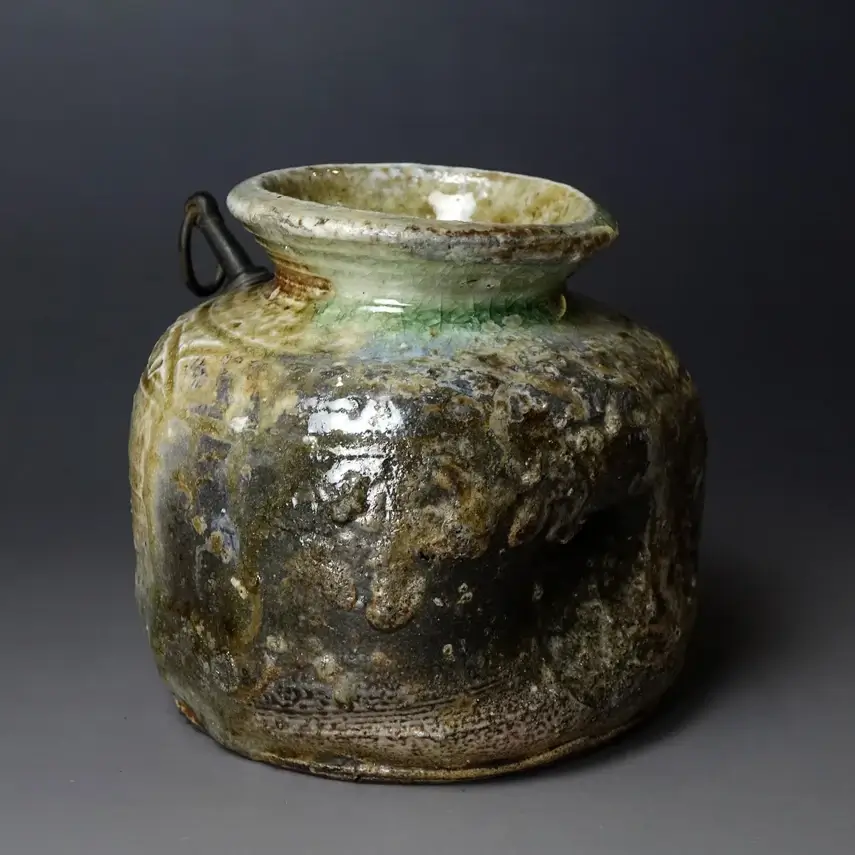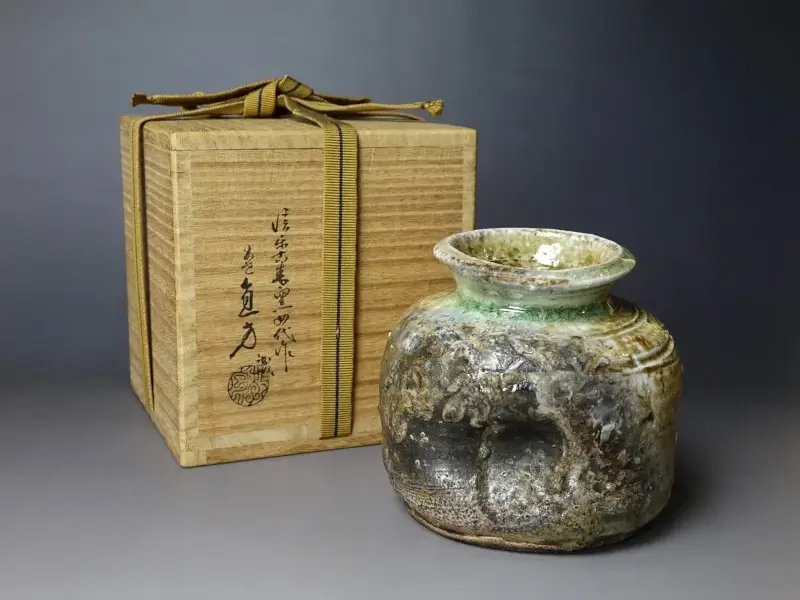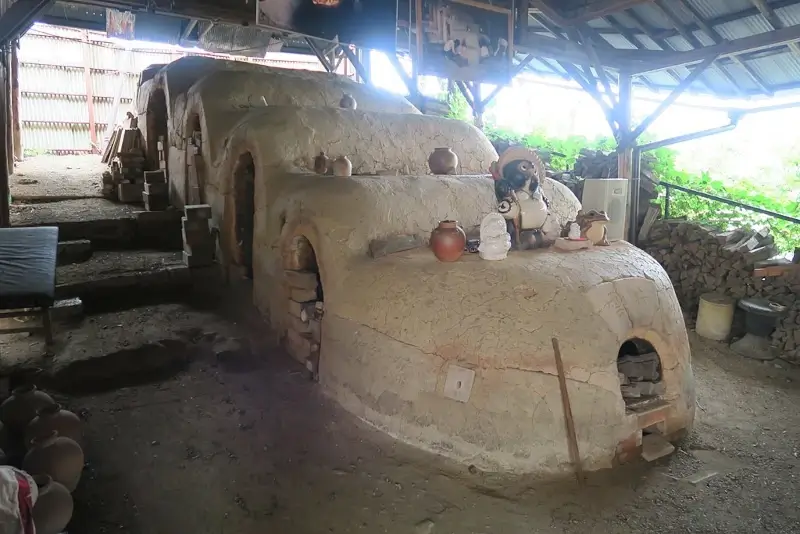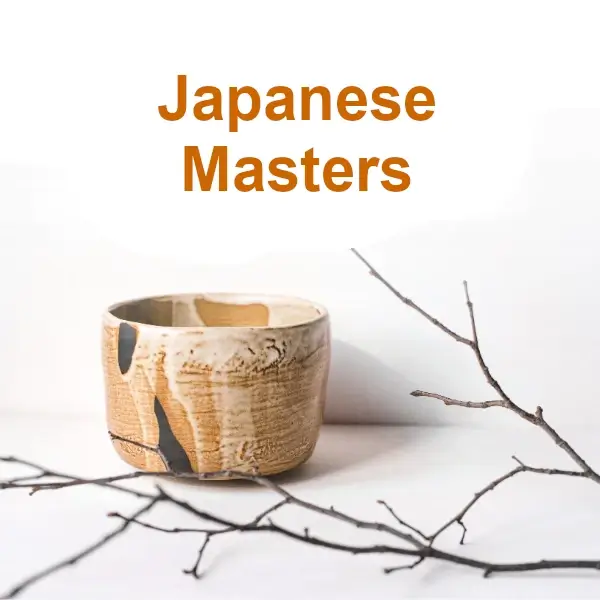The mythical Rokkoyo kilns of Japan

Rokkoyo kilns are traditional Japanese ceramic kilns, emblematic in the creation of ceramics such as Bizen and Shigaraki. Characterized by unique firing techniques, these kilns produce pieces with distinctive aesthetic effects, valued in Japanese culture for their beauty and functionality, especially in ceremonies such as tea.
What are Rokkoyo kilns?
Japan’s Rokkoyo kilns, also known as Rokkoyogama, represent a fundamental element in the history of Japanese ceramics. These six ancient kilns are celebrated for their unique techniques and styles that have endured for over a thousand years. Each is located in a different prefecture of Japan and has contributed to the country’s rich ceramic tradition with its distinctive methods and aesthetic results.
Japan’s six ancient kilns: where each one is located
Discover on our interactive map where each one was located, as well as the other most important Japanese ceramics:
Explore theinteractive map of Japanese ceramics
Keep in mind that sometimes many of them were created beyond the specific points marked.
Click hereat the information points, you will find out which type of pottery is native to each area of Japan and learn about its fascinating history.
Each description links to a page dedicated to each type of ceramic for further information.
Enjoy your trip!
- Kutani: It is a fine ceramic developed in Ishikawa Prefecture more than 350 years ago, famous for its elegant designs and use of exceptionally vivid colors made possible by the firing process.
- Yuri-kinsai: It is distinguished by applying gold leaf to the pottery and adding additional glaze. Developed by Sakaeda Kakiemon in the 17th century, it is characterized by its two-color approach with soft black interiors and lighter exteriors. The technique includes two types of gold leaf under the glaze and can require up to six firings to obtain the final product, creating a complex composition and a visually three-dimensional surface.
- Shoza: The Shoza style is a blend of four overlay techniques, producing detailed and colorful pieces.
- Arita: Arita ware, also known as Imari porcelain, is famous for its fine white porcelain decorated with delicate hand-painted designs and is produced in Saga Prefecture.
- Hagi: Hagi ware is characterized by its subtle texture and color, emphasizing simplicity and naturalness. It is produced in Yamaguchi Prefecture.
- Karatsu: It is a rustic ceramic known for its simple decorations and practical shapes, produced in Saga Prefecture.
- Seto: Known for being made in one of six Rokkoyo kilns. It is one of Japan's oldest and most diverse ceramics, with styles ranging from utilitarian pottery to artistic pieces, and is produced in Aichi Prefecture.
- Shigaraki: Prized for its natural finish and distinctive texture, often with fire marks and earthy tones, it is produced in Shiga Prefecture, east of Lake Biwa. It belongs to one of six Rokkoyo kilns.
- Bizen: Characterized by no glaze and a distinctive reddish color, it is prized for its sturdiness and simple design. It belongs to one of the six Rokkoyo kilns in Japan, in Okayama Prefecture.
- Echizen: Echizen belongs to an ancient tradition of pottery known for its utility, robust aesthetics and simple designs. It was one of six Rokkoyo kilns, the ancient kilns of Japan. It is located in Fukui Prefecture.
- Tamba: It is noted for its high-temperature works with natural glazes varying from shades of brown to deep black, and is produced in Hyogo Prefecture. It belongs to one of Japan's six ancient kilns, the Rokkoyo kilns.
- Tokoname: In Aichi Prefecture, it was the largest production area among the mythical Rokkoyo kilns. It specializes in unglazed ware made of red clay called 'Shudei', known for its fine quality and porcelain-like smoothness. Tokoname is famous for its tea utensils.
Characteristics of Japanese Rokkoyo kilns
I will tell you some peculiarities of these mythical kilns for firing ceramics.
For example, Bizen, located in Okayama Prefecture, is famous for its high-temperature-fired unglazed pottery, which is noted for its durability and unique aesthetics. Echizen, in Fukui Prefecture, is known for its Yaki-shime-style pottery, valued for its simplicity and expressiveness. Seto, in Aichi Prefecture, is notable for being one of the first in Japan to produce glazed ceramics, offering a wide range of styles and finishes.
The anagama kiln, a type of traditional Japanese kiln for firing pottery, also plays an important role in Japanese ceramics. Introduced to Japan from China via Korea in the 5th century, the anagama is a single-chamber kiln built in the form of an inclined tunnel. This kiln is fueled by wood, and the interaction between the fire, wood ashes and minerals in the clay creates a natural glaze that coats the fired pieces, producing everything from rustic objects to fine, shiny pieces.
The influence of Korean potters, brought to Japan in the 16th century, has also been significant, particularly in the Kyushu region, where great styles of pottery and porcelain, such as Arita, were developed. Arita ware, for example, was the first Japanese porcelain and became an important trade item with Europe, especially when Chinese porcelain production was halted due to conflicts.
What are these Japanese ceramic kilns?
Rokkoyo kilns are six ancient and famous ceramic kilns in Japan, each with unique characteristics and styles that have been maintained over more than 1000 years.
You have here the list with each one and in which prefecture (Japanese jurisdiction) they are located:
| Kiln | Prefecture |
|---|---|
| Seto | Aichi |
| Shigaraki | Shiga |
| Bizen | Okayama |
| Echizen | Fukui |
| Tamba | Hyogo |
| Tokoname | Aichi |
Bizen
In Okayama Prefecture, it is famous for its unglazed, high-temperature fired pottery. It is noted for its durability and unique aesthetics, with natural patterns created by fire and ash inside the kiln. It is valued in the Japanese tea ceremony for its bowls and utensils with earthy colors and sturdiness.
Echizen
Located in Fukui Prefecture, it is characterized by its strong Yaki-shime style pottery. The pieces reflect a tradition that dates back to the 7th century, standing out for their simplicity and expressiveness. The pottery is recognized for its distinctive quality, resulting from the clay and firing process.
Seto
In Aichi Prefecture, it has the distinction of being one of the first in Japan to produce glazed ceramics. Its wide range of ceramics includes everything from everyday tableware to architectural and artistic ceramics. Seto is known for its versatility and the wealth of materials in the region, allowing for a diversity of styles and finishes.
Shigaraki
Located in Shiga Prefecture, east of Lake Biwa, it is known for its rough clay and natural ash glaze. Shigaraki is popular in the Wabi-Cha style tea ceremony for its simple, natural aesthetic. The pottery is versatile, suitable for both traditional Japanese and modern settings.
Tamba
In Hyōgo Prefecture, he is known for his pottery with a natural ash glaze finish. Tamba creates unique pieces, with variations in patterns and shades depending on the application of ash and exposure to the flame. A traditional potter’s wheel is used, reflecting a deep connection to historical techniques.
Tokoname
In Aichi Prefecture, it was the largest production area among the Rokkoyo. It specializes in unglazed pottery made of red clay called “Shudei”, known for its fine quality and porcelain-like smoothness. Tokoname is famous for its tea utensils, especially teapots, which are considered important cultural assets in Japan.

This image and the cover image are from Treasures of Old times.
The origin of Rokkoyo kilns dates back to the medieval period in Japan, with the earliest history dating back approximately 1000 years. These kilns are of great historical value and have maintained their techniques and styles to this day. They are known for their rustic and simple textured pottery, which embodies the beauty of the Wabi Sabi concept and is highly prized by many tea masters, being an essential part of Japanese culture.
Fujio Koyama, a leading ceramics scholar, coined the term “Rokkoyo” in 1948 to describe the six ceramic cities of Shigaraki, Bizen, Tanba, Echizen, Seto and Tokoname, which have produced ceramics from medieval times to the present day. These cities were designated as Japan Heritage Sites in 2017. Since the 12th and 13th centuries, these places have been centers of traditional pottery and grew up producing pots, jars and bowls. Although each area has its own unique characteristics, they all share the rich soil necessary for pottery production.

A common characteristic of the Rokkoyo is that they are all blessed with rich and unique soils, which have been the basis of their ceramic production. For example, Bizen ware is made primarily from hiyose, a soil found at the bottom of rice paddies, while Tokoname ware is now best known for its reddish shudei clay.
In terms of technique, the “yakishime” technique, which involves firing without glaze, is used in many of the Rokkoyo. This technique makes it possible to enjoy the different expressions of the clay resulting from changes in the kiln, known as “yohen”, and is currently gaining popularity overseas.
In short, Rokkoyo kilns are famous not only for their age and continuous production of traditional ceramics, but also for the unique quality of their materials and techniques, which reflect Japan’s rich history and culture in the art of ceramics.
The best works in Japanese ceramics
More about Japanese pottery:

